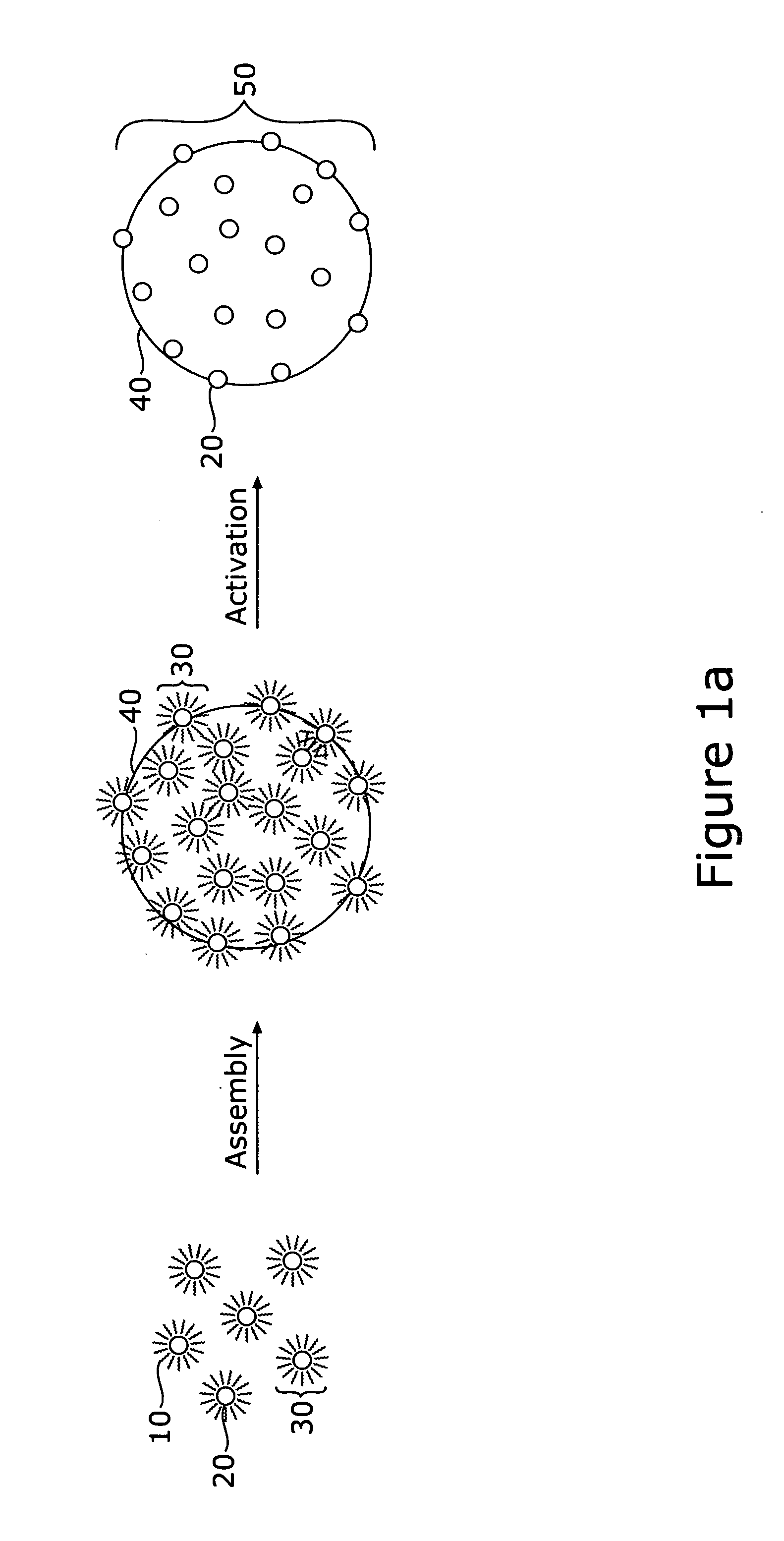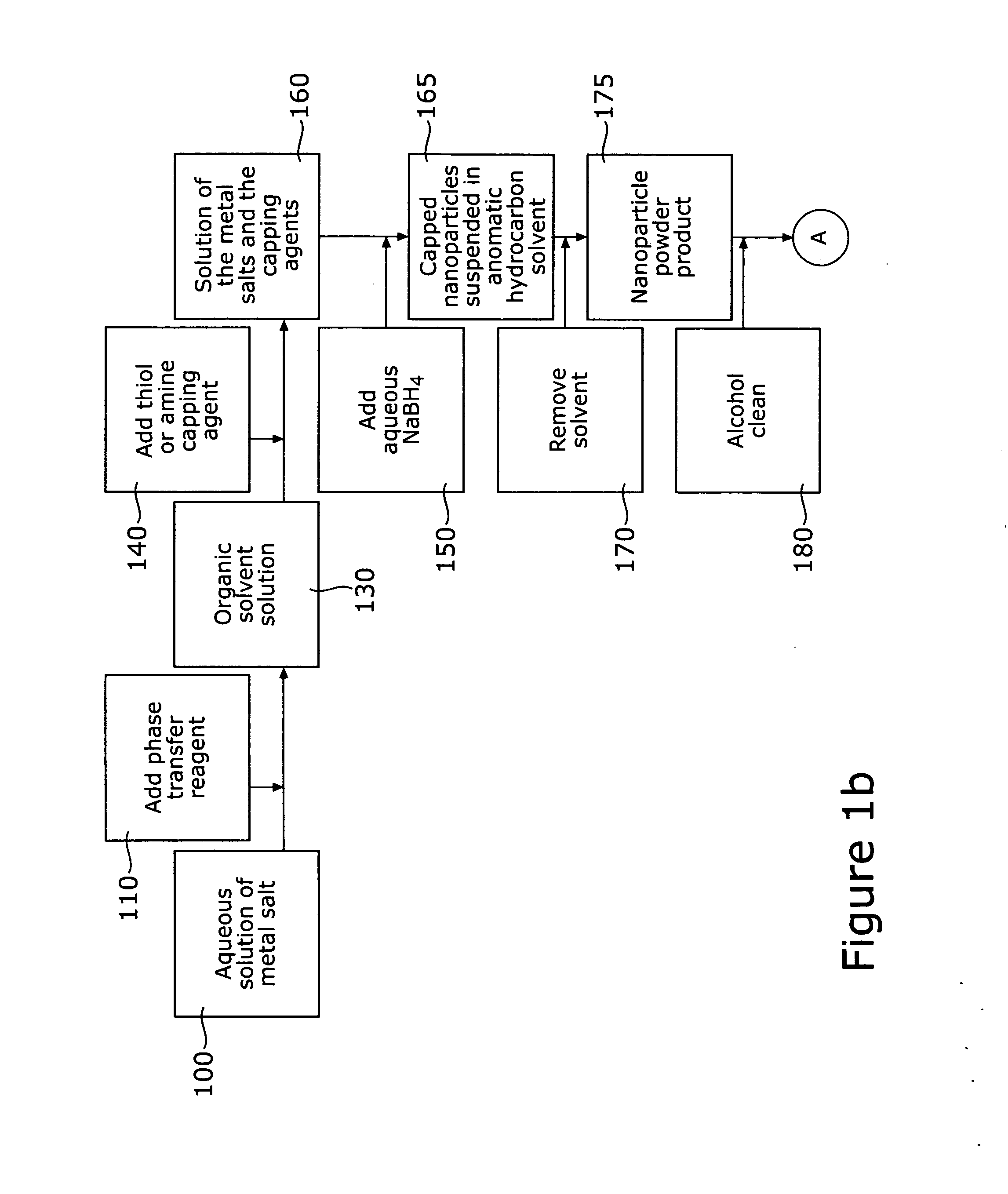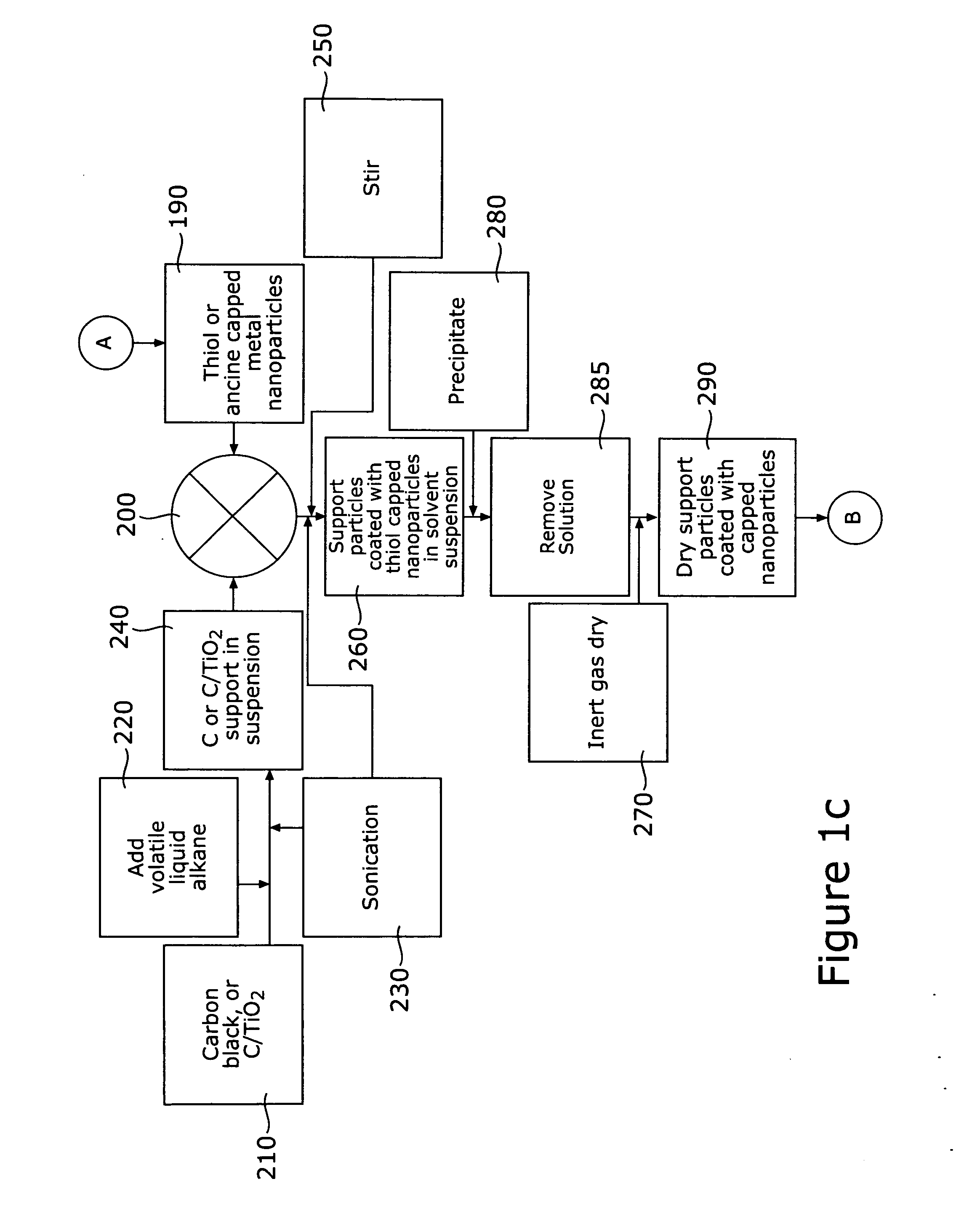Gold-based alloy nanoparticles for use in fuel cell catalysts
a fuel cell and nanoparticle technology, applied in the field of bifunctional gold/platinum (aupt) anode and cathode nanoparticle catalysts, can solve the problems of complex process technology, large investment overall conversion requires complex process technology and substantial investments in safety and control, so as to achieve the effect of increasing the energy efficiency dmfcs
- Summary
- Abstract
- Description
- Claims
- Application Information
AI Technical Summary
Benefits of technology
Problems solved by technology
Method used
Image
Examples
Embodiment Construction
[0033] A method is described for fabricating core-shell nanoparticles comprising a bimetallic alloy of gold and platinum (AuPt), such nanoparticles having controlled sizes in the range of approximately 1-5 nm, whereby such nanoparticles may be used as bifunctional catalysts for fuel cells, and particularly for DMFCs. The method prepares bimetallic AuPt alloy nanoparticles of controlled size, on non-metallic supports and electrically conductive substrates, forming DMFC catalysts. These catalysts have controllable Au to Pt ratios. Supports include carbon black (C) and possibly other non-metallic materials, including Carbon-supported TiO2 (C / TiO2), and the electrically conductive substrates used are materials resistant to chemical degradation, such as glassy carbon electrodes. These catalysts demonstrate efficient electro catalytic activity towards CO and methanol oxidation as well as O2 reduction.
[0034] Referring first to FIGS. 1a and 1b, there is shown a pictorial, schematic diagram...
PUM
| Property | Measurement | Unit |
|---|---|---|
| Temperature | aaaaa | aaaaa |
| Temperature | aaaaa | aaaaa |
| Fraction | aaaaa | aaaaa |
Abstract
Description
Claims
Application Information
 Login to View More
Login to View More - R&D
- Intellectual Property
- Life Sciences
- Materials
- Tech Scout
- Unparalleled Data Quality
- Higher Quality Content
- 60% Fewer Hallucinations
Browse by: Latest US Patents, China's latest patents, Technical Efficacy Thesaurus, Application Domain, Technology Topic, Popular Technical Reports.
© 2025 PatSnap. All rights reserved.Legal|Privacy policy|Modern Slavery Act Transparency Statement|Sitemap|About US| Contact US: help@patsnap.com



